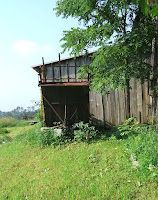Suddenly it’s June. It’s the month I’ve been waiting for all year. June ushers in summer for me here in Pennsylvania.
As a farm kid, it was the month of clover, alfalfa, and grasses drying in the rows in our fields. Smells were everywhere: The odor of gasoline from the tractor, hay truck, and lawn mower. The sweet fragrance of summer rag roses in the yard. The earthy aroma of rain as it approaches to soak the ground. The whiff of mint circling the old oak spring boxes in the pastures. These were all mixed together in the daily harmony of farm life.There was also the unexpected that happened to throw a person off kilter. It was the black snake slithering over a stone wall as we tramped down the fields to the pasture to bring the herd of cows home for evening milking. Better yet, it was those aggravating times when the black racer’s lazy cousin, lying in the low branches of a hemlock tree, would drop down in front of the herd and send the cows racing willy-nilly up into the wooded hillside where we had to regroup them one by one. And we always counted. Numerous times we counted those cows to be sure we had them all before setting out for home.
When evening fell, we’d sit out on our front porch to catch a fading breeze and watch the barn swallows circle the sky and deftly snatch the last mosquito. Lightening bugs danced above the lawn and in the bushes. Windows were thrown open wide. If you were lucky, you had a window fan on the hottest night. The hum of insects in the grasses and trees were the songs that lulled us to sleep. Far off, you could hear the neighbor’s dog bark, upset by some night creature nearby. And everyone listened for the eerie hoots of an owl on his evening hunt.
When people ask if summers were the hard times of farm life, I’d have to say, they were the busy and tiring times with long days. But they were the good times.
It was June. It was summer. And it felt wonderful.
VISIT MY AMAZON AUTHOR PAGE FOR ALL MY BOOKS






